Image Archive



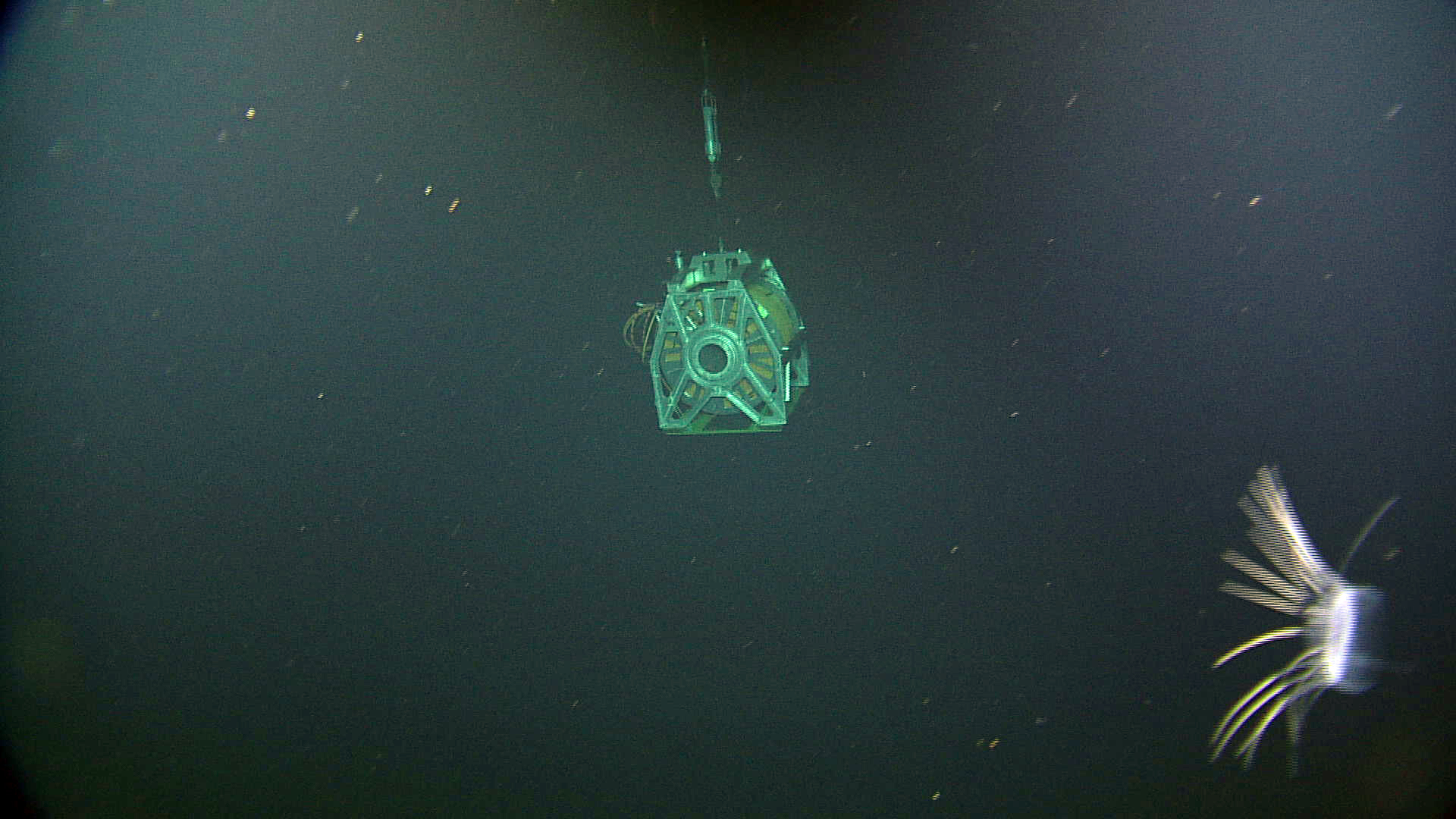


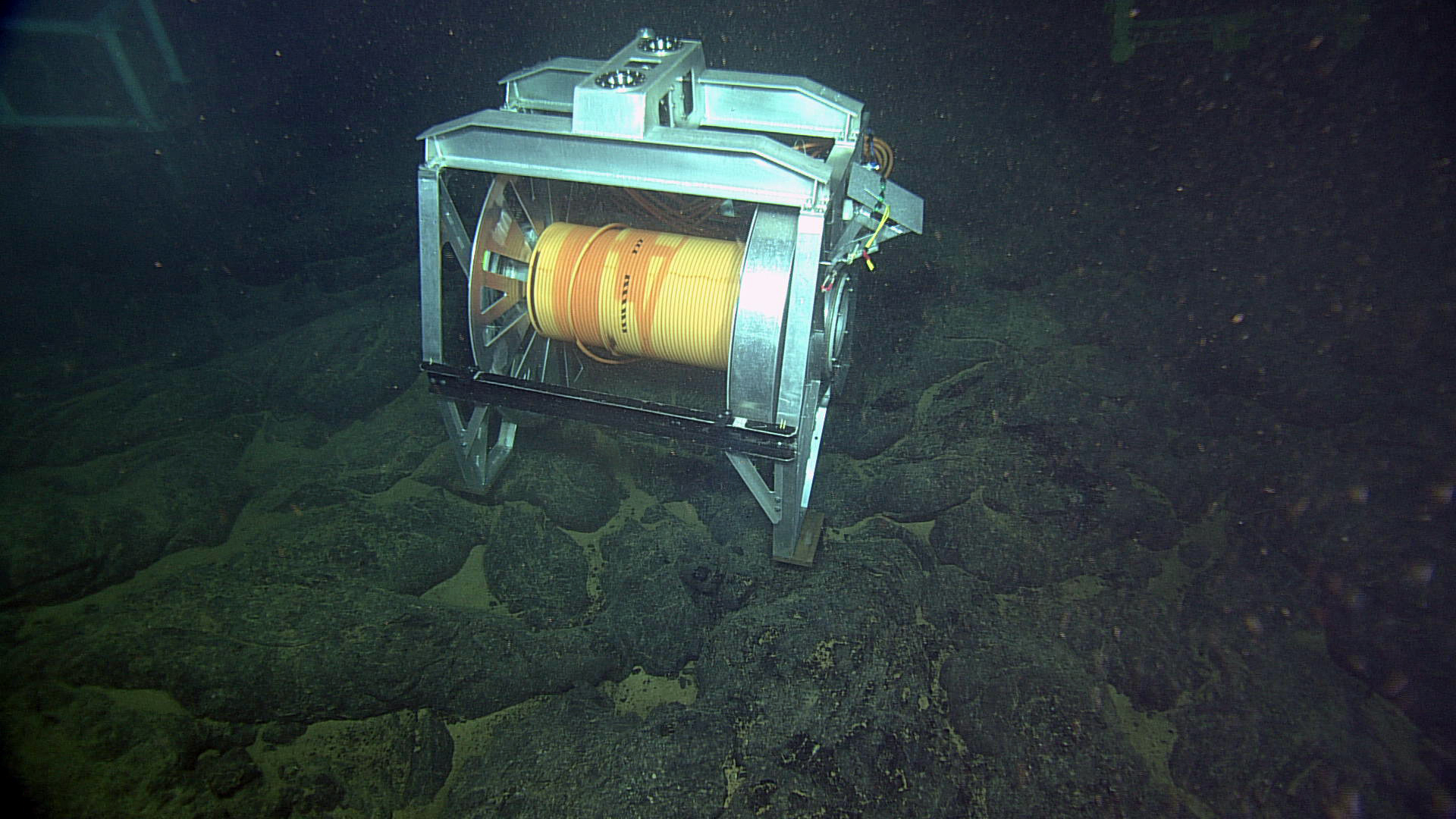




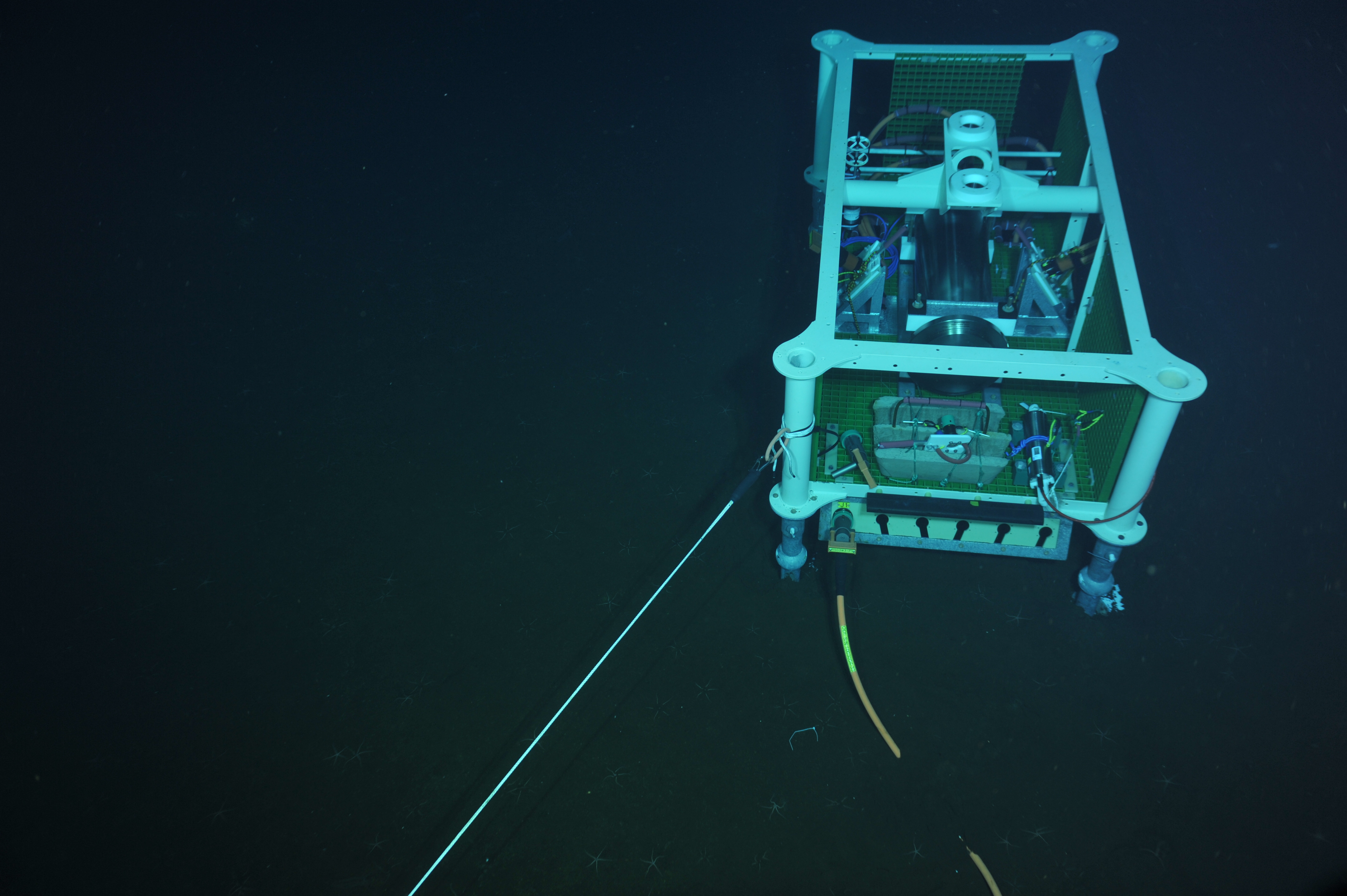

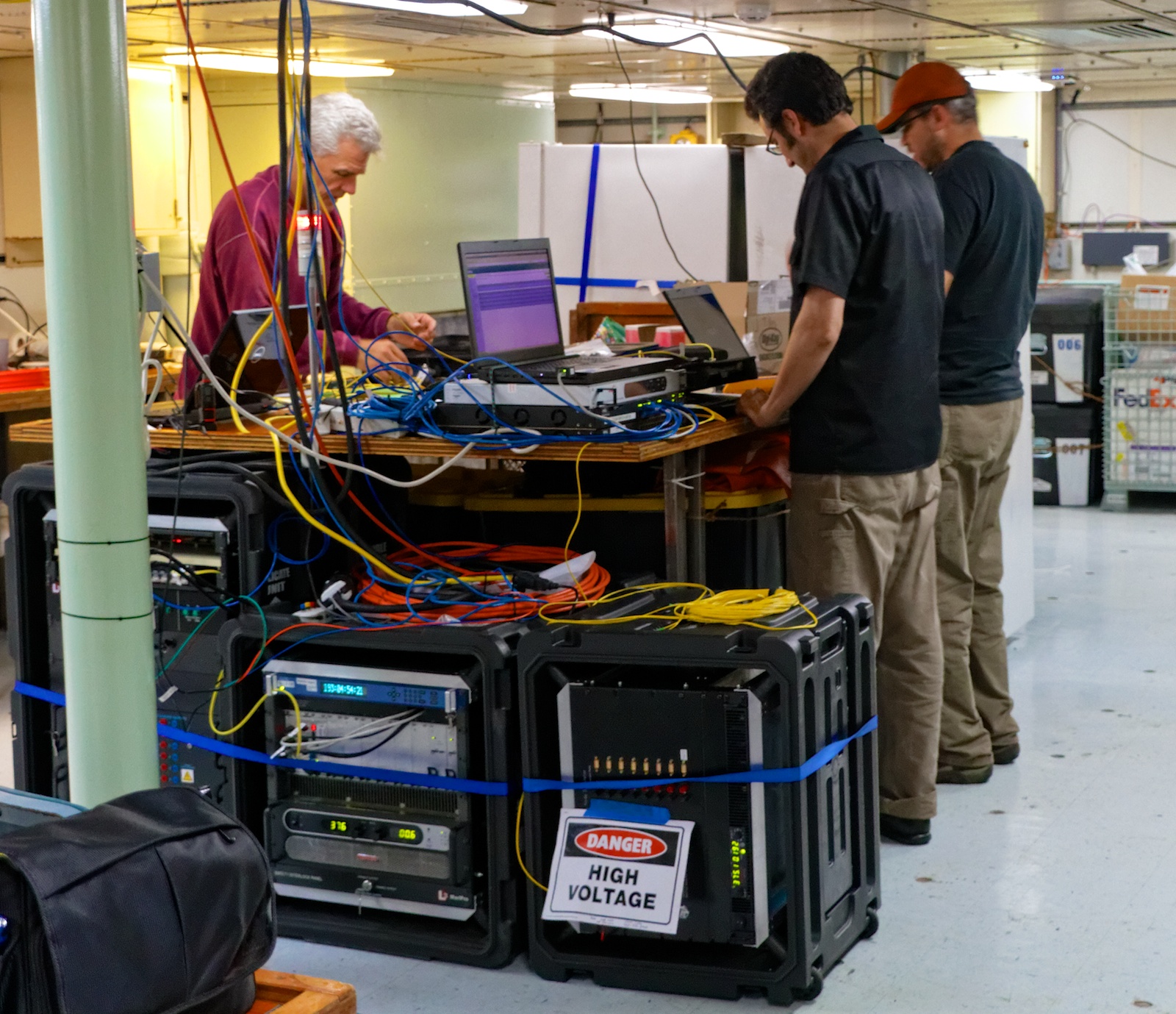
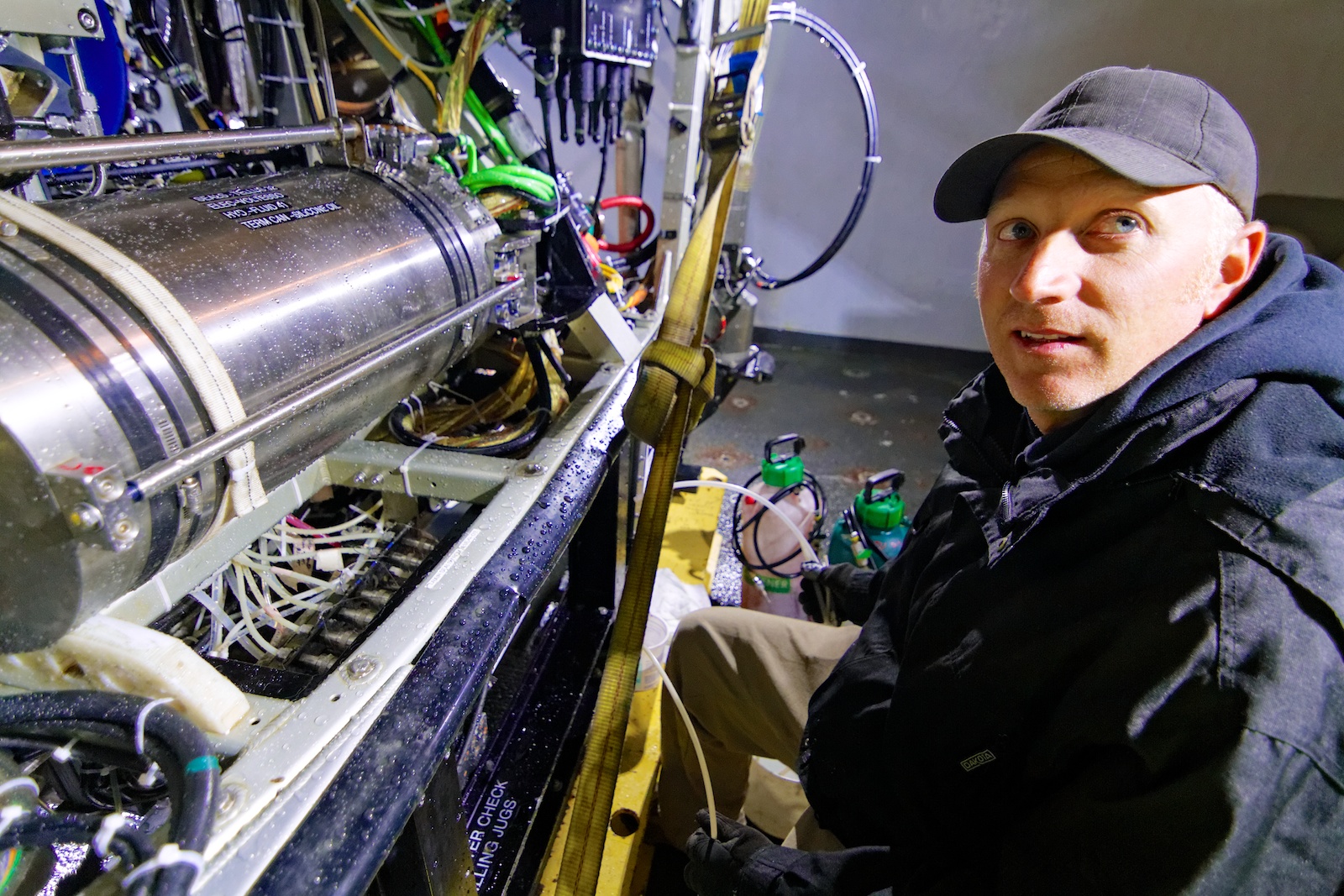

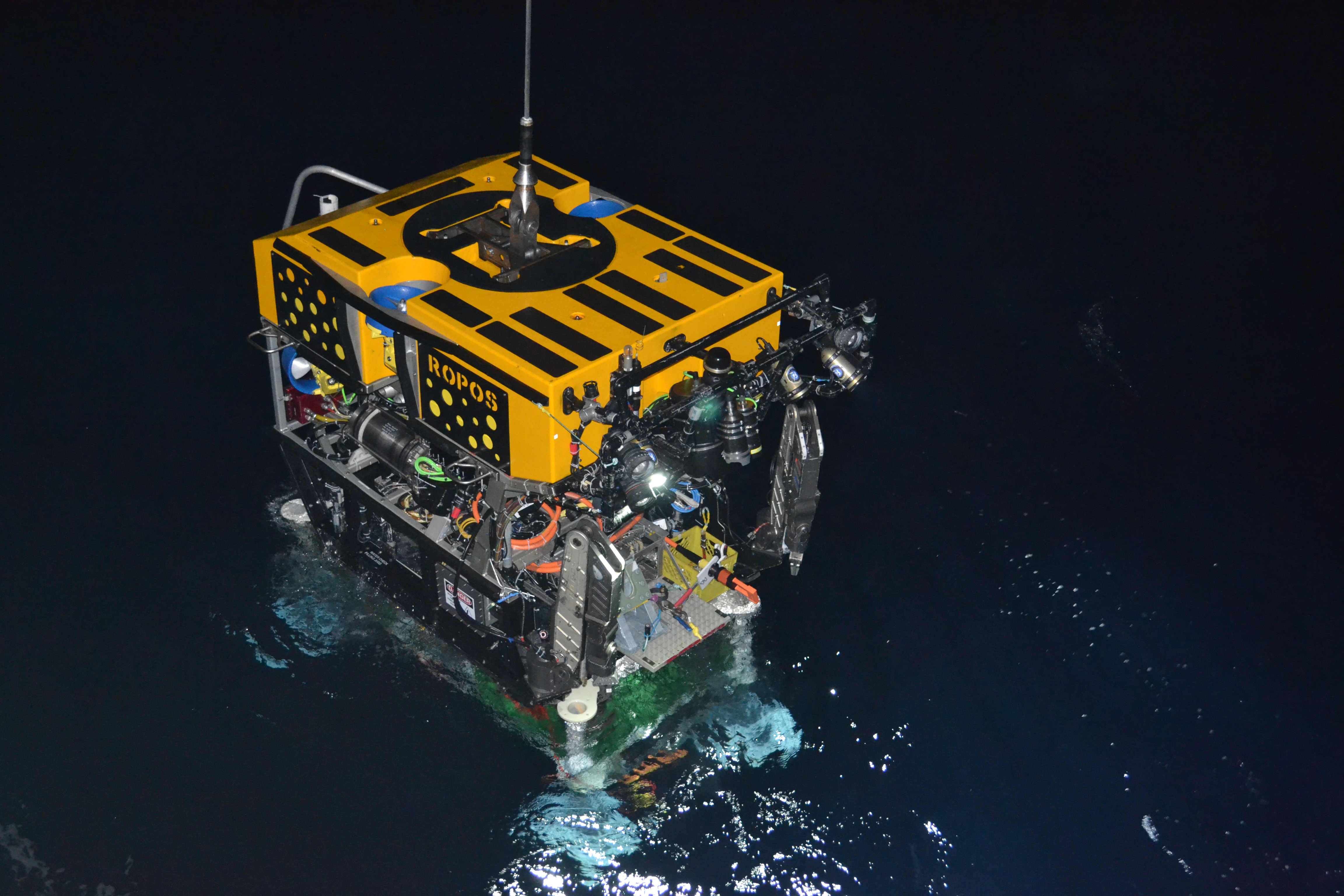
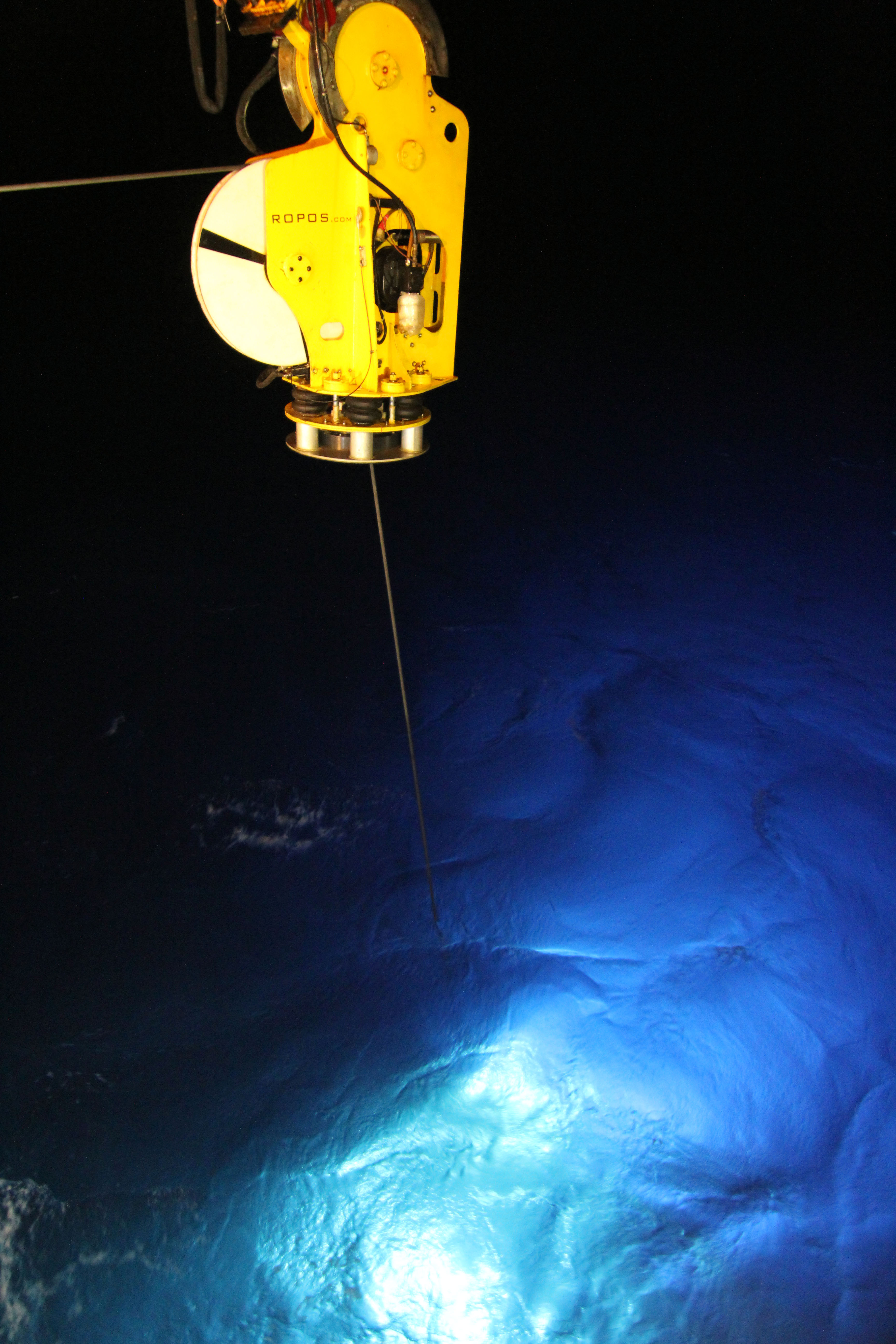



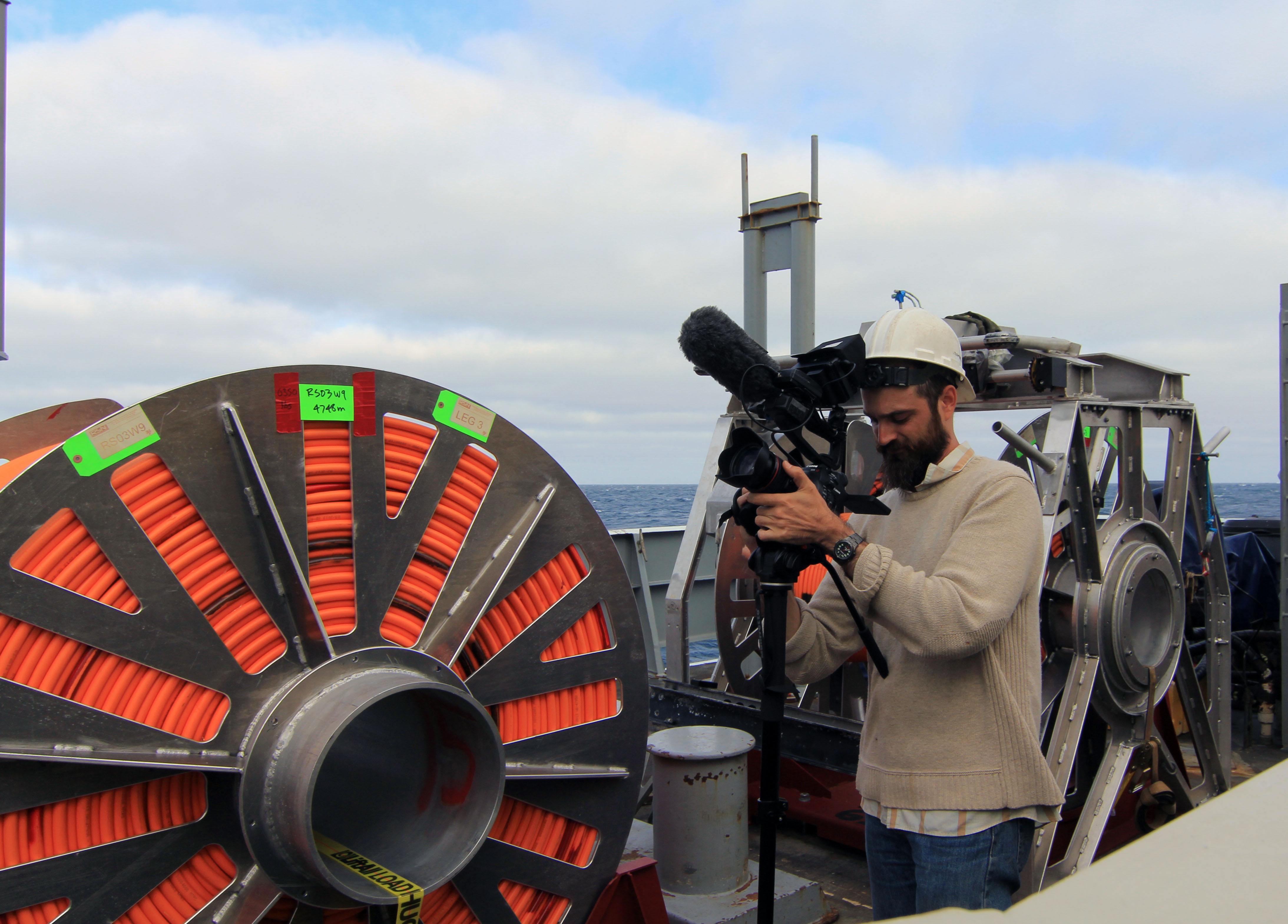



ROPOS begins its descent into the deep, observed by a local albatross at Axial Seamount. Photo credit: Mitchell Elend

A Deep Sea Skate slowly swims by at the summit of Axial Seamount, 5000 ft beneath the ocean's surface. A small spider crab sits atop an old lava flow to the left of the skate. Credit: UW/NSF-OOI/CSSF; V13.

ROCLS gently sets down on the seafloor in preparation for deployment at an ~ 5 km long extension cable to the Central Caldera site at the summit of Axial Seamount. Over 15,000 feet of cable is hosted on the drum. Credit: NSF-OOI/UW/CSSF; V14.

The ROV ROPOS follows the Remotely Operated Cable Laying System (ROCLS) to the seafloor, keeping it in its vision as it descends 5000 feet beneath the ocean's surface to the seafloor. Photo credit: NSF-OOI/UW/CSSF

An empty cable drum rests on the seafloor at the end of the installation of ~1800 feet of cable from near Primary Node PN3B to a site on the eastern side of the caldera at Axial Volcano.Photo Credit: NSF-OOI/UW/CSSF.

A rattail fish, over a meter long, swims slowly in a collapsed zone at the summit of Axial Volcano. Credit: NSF-OOI/UW/CSSF, V13.

The Remotely Operated Cable Laying System (ROCLS) shown deployed at the summit of Axial Seamount near Primary Node 3B (water depth ~ 5000 ft). The drum holds ~ 2000 ft of cable that will soon be deployed. Once a small section of the cable is secured to the secondary node (in distance, on left), ROPOS will latch into the top of ROCLS and "fly" through the water column, deploying cable underneath it as it travels. Photo Credit NSF-OOI/UW/CSSF.

A Roughtail skate slowly swims by during ROV operations at the base of Axial Volcano. Photo credit: NSF-OOI/UW/CSSF; V13.

A fish at 8000 ft beneath the surface investigates ROV operations at the summit of Axial Volcano. Photo credit: NSF-OOI/UW/CSSF

View of the front porch of ROPOS showing a connection from the RSN Interface Box on ROPOS to an extension cable that is 1800 feet in length connected to a Secondary Junction Box (another power and communications outlet on the seafloor). The connector with the orange handle is "wet-mateable", meaning that it can be unplugged and plugged in on the seafloor. When disconnected, it is placed in a parking position to keep the connectors clean and safe (stand with red handle to the right). Photo credit: NSF-OOI/UW/CSSF

A pressure sensor deployed on the seafloor is powered up for the first time through fiber optic cables, sending data live to the ship >8000 feet above. Photo credit: NSF-OOI/UW/CSSF

The medium powered Junction Box (MJ01A) is connected to > 1800 feet of extension cable deployed by ROPOS on the seafloor at the base of Axial Seamount. A pressure sensor inside the node is awaiting deployment for follow-on testing. Photo credit: NSF-OOI/UW/CSSF

Deployed at the base of Axial Seamount, this secondary node was used as an anchor during the deployment of 600 m of extension cable and during testing while ROPOS dowloaded data from a pressure sensor and current meter. (credit: NSF-OOI/UW/CSSF)

Applied Physics Lab engineers (from left to right) Tim McGinnis, Jesse Dosher, and James Tilley look over tests results as ROPOS connects to a secondary node on the seafloor and sends real-time data back to the surface. Photo by Ed McNichol

ROPOS pilot and engineer, Josh Chernov, works on the ROV. Photo by Ed McNichol

Chief Scientist John Delaney (right) narrates the live video stream as ROPOS pilot Josh Chernov approaches ROCLS, the remotely operated cable laying system, on the seafloor. Photo by Allison Fundis

ROPOS goes into the water in the early morning of July 10, prior to descending 2600 m (~7800 ft) to the seafloor. Directly latched below the vehicle is the medium-powered junction box, MJ01A. Photo credit: NSF-OOI/UW/CSSF

ROPOS lights up the water column as it begins its descent to the base of Axial Seamount 2600 meters deep. Photo by Allison Fundis

Vincent Auger of ROPOS watches over the ROV and secondary node as they are deployed over the base of Axial Seamount in preparation for deploying ~500 meters of extension cable. Photo by Allison Fundis

Seconday Node 3A awaits on deck to be deployed at the base of Axial Seamount, where it will eventually be connected to the primary node previously deployed there. Photo by Allison Fundis

Marine Tech Brandy shows Julie, Owen, and Judy how to deploy the CTD. Photo by Allison Fundis

Videographer Ben Fundis captures action on the fantail. (photo: Allison Fundis)

Graduate student Rick Berg, readies the Mosquito instrument that will be deployed at Hydrate Ridge to measure fluid flow out of and into the sedimented seafloor. (photo: Allison Fundis)

Beginning a nearly mile long descent to the seafloor (photo: Judy Twedt)
- Anemone
- Animal
- Arthropod
- ASHES
- Axial
- Axial Base
- Axial Biology
- Axial Caldera
- Bacteria
- Basalt Lava
- BEP
- Biofouling
- biolgoy
- Biology
- Camds
- Camera
- Camhd
- Central Caldera
- Ciliates
- Cnidaria
- Coastal Biology
- Crab
- Deep Profiler Mooring
- Dive Highlights
- Eastern Caldera
- Echinoderms
- Endurance Array
- Engineering Team
- ENLIGHTEN 10
- Exploratorium
- Fish
- Geology
- HD Camera
- HPIES
- Hydrate Ridge
- Hydrates
- Hydrophone
- Hydrothermal Vents
- Illustration
- Inshore 80 Meters
- Instrument
- International District
- J-BOX
- Jason
- Jellyfish
- Junction Box
- K12
- Lava
- Mollusk
- Moorings
- Nodes
- Nudibranch
- Octopus
- OOI
- Oregon Offshore
- Oregon Offshore 600 m
- Oregon Shelf
- Oregon Slope Base
- People
- PN1B
- PN1D
- Polychaetes
- PPSDN
- Primary Node
- RASFL
- ROCLS
- ROPOS
- ROPOS Dives
- ROV Team
- RV Revelle
- RV Sikuliaq
- RV Thompson
- Salp
- Sample
- SC13
- Science Team
- Sea Cucumber
- Sea Star
- Sea Urchin
- Seafloor
- Seismometer
- Sensors
- Shallow Profiler Mooring
- Shark
- Shipboard
- Shore Station
- Slope Base
- Smoker
- Soft Coral
- Southern Hydrate Ridge
- Sponge
- Squid
- Students
- Students & Guest Participants
- Tmpsf
- Tubeworms
- VISIONS 11 Leg 1
- VISIONS 11 Leg 2
- VISIONS 11 Viewers
- VISIONS 13
- VISIONS 14
- VISIONS 15
- VISIONS 16
- VISIONS 17
- VISIONS 18
- VISIONS 20
- VISIONS 22
- VISIONS 23
- Visualization
